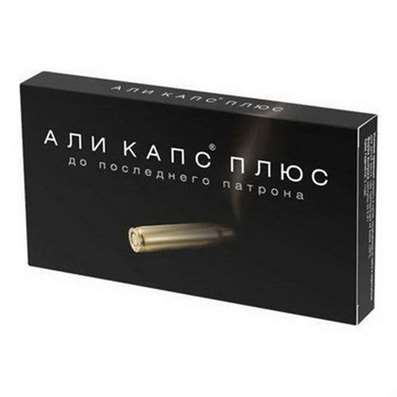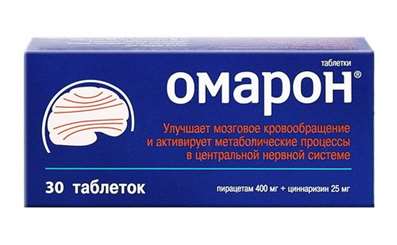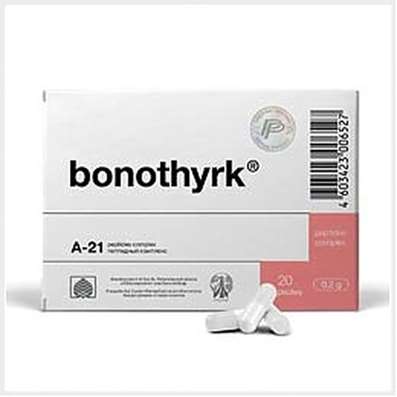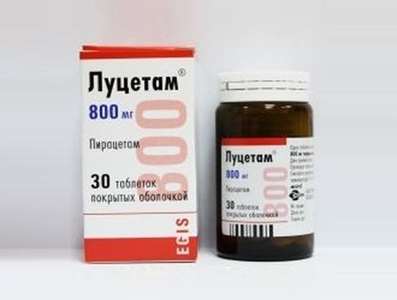Instruction for use: Glucosteril 20%
I want this, give me price
Dosage form: Solution for infusions
Active substance: Dextrosum
ATX
B05BA03 Carbohydrates
Pharmacological group
Nutrition carbohydrate agent [Means for enteral and parenteral nutrition]
The nosological classification (ICD-10)
A48.3 Toxic shock syndrome: Bacteremic shock; Infectious-toxic shock; Intoxication syndrome; Toxico-infectious shock; Toxic shock; Chronic intoxication in diseases of the digestive tract; Chronic intoxication in gastrointestinal infections; Endotoxin shock
D69.9 Hemorrhagic condition, unspecified: Diathesis, hemorrhagic (familial); Hemorrhagic diathesis; Hemorrhagic complications; Hemorrhagic conditions; Hemorrhagic diathesis; Hemorrhagic syndrome; Disease of internal organs with hemorrhagic syndrome
E16.2 Hypoglycemia, unspecified: Hypoglycemic coma; Hypoglycemic conditions; Severe hypoglycemia; Hypoglycaemia
E74 Other disorders of carbohydrate metabolism: Disorders of carbohydrate metabolism; Hereditary disorders of carbohydrate metabolism
E86 Decreased fluid volume [hypovolaemia]: Water deficit recovery; Indemnification of isotonic deficiency of water; Compensation for isotonic sodium deficiency; Compensation BCC; Replenishment of water deficit with stored KShS; Replenishment of fluid volume; Replenishment of BCC; Replenishment of electrolytes with stored KHS; Hypovolemic conditions; Hypovolemic condition; Hypovolemia; Hypotonic form of hypohydration; Hypochloremia with dehydration; Dehydration of different origin; Dehydration in children; Substitution of plasma volume for blood loss in pediatrics; Substitution of plasma with its losses and burns; Isotonic dehydration; Isotonic form of hypohydration; Violation of the water-salt balance; Dehydration;Dehydration in acute intestinal infections; Acute hypovolemia; Loss of fluid in burns; Toxicosis with exsycosis
K59.1 Functional Diarrhea: Diarrheal Syndrome; Diarrhea; Diarrhea with prolonged enteral feeding through the probe; Prolonged diarrhea; Nonspecific diarrhea; Acute diarrhea; Diarrhea; Syndrome of diarrhea;Functional diarrhea;Chronic diarrhea; Diarrhea with an electrolyte balance disorder; Chronic diarrhea; Diarrhea of non-infectious genesis; Diarrhea after a; gastroectomy; Diarrhea in children; Persistent diarrhea; Diarrhea (diarrhea); Enterocolitis of non-infectious origin
K72.9 Hepatic failure, unspecified: Latent hepatic encephalopathy; Acute liver failure; Liver failure; Hepatic precoma; Acute hepatic-renal failure
K76.0 Fatty liver degeneration, not elsewhere classified: Fatty hepatosis; Hepatosis fat; Dystrophy of fatty liver; Fatty liver infiltration; Fatty liver degeneration; Fatty degeneration of the liver; Steathepatitis; Fatty degeneration of the liver; Non-alcoholic steatohepatitis; Disorders of lipid metabolism of the liver; Steatosis; Steatosis states; Lipidoses; Acute yellow atrophy of the liver
K76.9 Liver disease, unspecified: Change in liver function in heart failure; Restoration of impaired liver function; Severe liver function disorders; Hepatitis; Hepatosis; Hepatopathy; Liver dysfunction; Diseases of the liver; Impaired liver function; Dysfunction of the liver; Infringements of function of a liver of an inflammatory etiology; Functional liver failure; Functional disorders of the liver; Chronic liver disease; Chronic diffuse liver disease; Enterogenic diseases of the gallbladder and liver
R11 Nausea and vomiting: Postoperative vomiting; Nausea; Vomiting; Vomiting in the postoperative period; Vomiting medication; Vomiting in the background of radiation therapy; Vomiting uncontrollable; Vomiting in radiation therapy; Persistent vomiting; Indomitable vomiting; Postoperative nausea; Vomiting with chemotherapy; Vomiting of the central genesis; Vomiting with cytotoxic chemotherapy; Persistent hiccups; Repeated vomiting
R55 Fainting [syncope] and collapse: Vasovagal syncope; Fainting; Fainting condition; Development of the collapse; Collapse; Collapse with Addison's Disease; Circulatory collapse; Fainted foxes; Fainting with heart disease; Fainting with exercise; Orthostatic hypotensive syncope
R57 Shock, not elsewhere classified: Obstructive shock
R57.9 Shock, unspecified: Pain shock; Hemolytic shock; Neurogenic shock; Shock; Shock condition; Shock states
R58 Bleeding, not elsewhere classified: Abdominal apoplexy; Hemorrhagia; Haemorrhage of the esophagus; Hemorrhage; Generalized bleeding; Diffuse bleeding; Diffuse bleeding; Prolonged bleeding; Blood loss; Blood loss during surgical interventions; Bleeding during surgery and in the postoperative period; Bleeding during labor; Bleeding and haemorrhage in hemophilia B; Bleeding from the gums; Bleeding intraoperative abdominal; Bleeding against a background of coumarin anticoagulants; Hepatic hepatitis; Bleeding in hemophilia A; Bleeding at hemophilia A; Bleeding with inhibitory forms of hemophilia A and B; Bleeding due to leukemia; Bleeding in patients with leukemia; Bleeding; Bleeding due to portal hypertension; Bleeding due to hyperfibrinolysis; Drug bleeding; Local bleeding; Local bleeding due to activation of fibrinolysis; Massive blood loss; Acute blood loss; Parenchymal hemorrhage; Hepatic bleeding; Postoperative hemorrhage; Kidney bleeding; Vascular-platelet hemostasis; Traumatic bleeding; Threatening bleeding; Chronic blood loss
T79.4 Traumatic shock: Haemorrhagic shock; Crash Syndrome; Posthemorrhagic shock; Postoperative shock; Post-traumatic shock; Post-traumatic shock; Traumatic shock; Syndrome of hemorrhagic shock and encephalopathy
T81.1 Shock during or after the procedure, not elsewhere classified: Operating shock; Postoperative shock; Operational shock
X49 Accidental poisoning and exposure to other and unspecified chemical and toxic substances: Severe intoxication; Carbon monoxide intoxication; Intoxication with arsenic hydrogen; Acute intoxication; Acute poisoning; Acute poisoning; Poisoning; Chemical intoxication; Chemical poisoning; Chronic intoxications; Exotoxicosis; Intoxication; Intoxication with iodine salts; Edema of the brain in poisoning
Z98.8 Other specified poslehirurgicheskie state: purulent complications in the postoperative period; Suppurative complications of surgery; Postoperative liver dysfunction; Postoperative vomiting; Postoperative complications; Postoperative period; The early postoperative period
Composition
Solution for infusion 1 liter
active substance: glucose (dextrose) monohydrate 220 g
(Corresponding to 200 g of anhydrous glucose)
Excipients: Water for injection - up to 1 liter; 25% hydrochloric acid (to correct pH) - q.s .; Sodium hydroxide (for correction of pH) - q.s.
indicators: energy value - 3360 kJ / l (800 kcal / L); Theoretical osmolarity - 1110 mOsm / l
Pharmachologic effect
Mode of action - Replenishing the deficiency of carbohydrates.
Dosing and Administration
IV by drop infusion.
Dosage: 30-40 drops / min (1.5-2 mL / min), the maximum daily dose for adults - 500 ml.
Adults with normal metabolism of dextrose administered daily dose should not exceed 6.4 g / kg, i.e. about 250-450 g (with a decrease in metabolic rate is decreased to a daily dose of 200-300 g) with daily volume of fluids - 30-40 ml / kg.
Babies for parenteral nutrition, along with fats and amino acids are administered in the first day 6 g / kg / day dextrose, subsequently - 15 g / kg / day.
injection speed in the normal metabolic state of the maximum rate of administration to adults dextrose - 0.25-0.5 g / kg / h (with a decrease in metabolic rate is decreased to the rate of introduction 0.125-0.25 g / kg / h). Children dextrose injection rate should not exceed 0.5 g / kg / h.
For a more complete digestion of dextrose administered in large doses administered simultaneously with insulin at the rate of 1 IU insulin per 5.4 g of dextrose. Administered dextrose diabetes under control of its content in the blood and urine.
Release form
Solution for infusion. The glass bottles for infusions of glass of hydrolytic class II, sealed with rubber (halobutyl) stoppers run-aluminum caps, plastic caps provided with the first control opening (Ph. Eur.), 250, 500 or 1000 ml. 6 or 10 vials. with holders for bottles or without them in a cardboard box (for hospitals).
In plastic bottles fitted with a loop-holder for drip, capped plastic combined firm cover "ship-shape", 250, 500 or 1000 ml. 10 or 20 vials. in a cardboard box (for hospitals).
Manufacturer
"Fresenius Kabi Deutschland GmbH". D-61346 Bad Homburg v.d.H., Germany.
The address of LLC Fresenius Kabi: 125167, Moscow.
Conditions of supply of pharmacies
For hospitals.
Storage conditions of the drug Glucosteril 20%
In the dark place at a temperature of no higher than 25 ° C.
Keep out of the reach of children.
The shelf life of the drug Glucosteril 20%
5 years.
Do not use beyond the expiration date printed on the package.

 Cart
Cart





